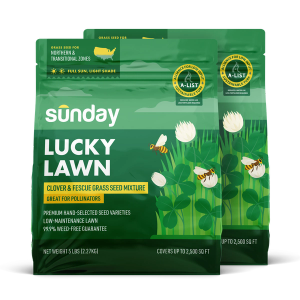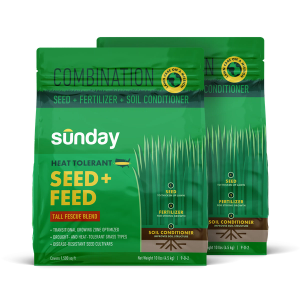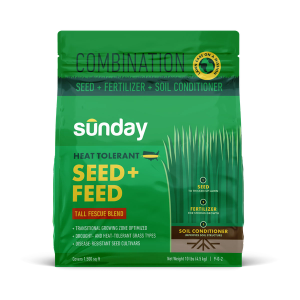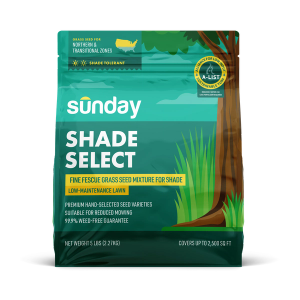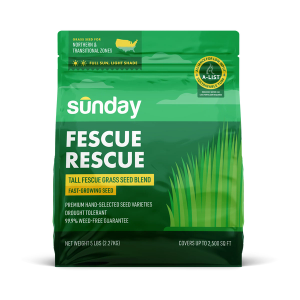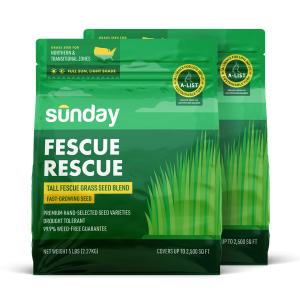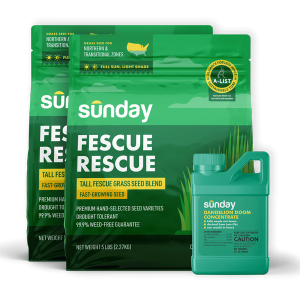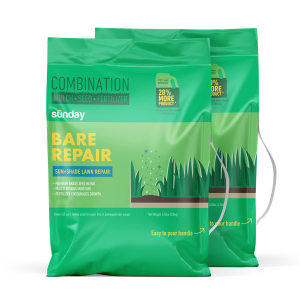What is phosphorus?
Phosphorus is a macronutrient, or essential substance, that all plants need to live. If you break down what grass is made of, phosphorus is the third most common element in plants behind nitrogen and potassium. Just like nitrogen and potassium, phosphorus is an important nutrient that helps plants grow. But unlike nitrogen and potassium, it does not need to be applied regularly.
When should I apply phosphorus?
Phosphorus is beneficial when applied at the right time, and in deficient soils, it can help increase rooting immediately. Your Sunday soil test will let you know if your soil is deficient in phosphorus but in general, less than 10% of Sunday soil tests reveal phosphorus deficiencies—so it isn’t very common. In new or young lawns, phosphorus can help build organic matter through grass growth and establishment. As an added bonus, once you apply phosphorus, it will remain available in the soil surface for grass to continue utilizing.
Since phosphorus is a legacy nutrient—meaning it lasts a very long time—it’s important to only apply it in these situations:
- Phosphorus-deficient soil
- Starting a new lawn from scratch
- Very young lawns (less than 3–5 years old)
Over-application of phosphorus can be harmful for the environment. Remember: Mature grass does not need supplementary phosphorus and most soil isn’t phosphorus deficient. Because the need for phosphorus is so minimal, most fertilizer applications containing phosphorus cause over-application issues.
How excess phosphorus harms the environment
When phosphorus is balanced in your soil, it’s perfectly fine. But more—even of a good thing—is not necessarily better. When too much is applied, it can run off into water bodies and potentially cause eutrophication, a.k.a. excessive nutrients in a body of water. Eutrophication leads to low oxygen levels and can result in dead zones that can no longer support life.
Phosphorus in manufactured products isn’t the only issue. It’s also a naturally occurring environmental pollutant found in leaf litter, pet waste, and bird waste. When leaf and animal waste are left on nonporous surfaces (e.g., cement, asphalt), it can enter waterways and, well, you know the rest.
Luckily, all of these consequences can be avoided by limiting the use of phosphorus in products and managing naturally occurring phosphorus by properly caring for natural waste.
How Sunday helps reduce phosphorus
At Sunday, we only use phosphorus when it’s necessary. Ever wondered why we’re so into soil testing? It’s not just because it’s fun! Through our soil analysis, we can see exactly what your soil needs, and what it doesn’t need. We then use MLSN (Minimum Levels of Sustainable Nutrition) to interpret that data in a more sustainable way. Ultimately, this helps us reduce the application of phosphorus to lawns by 6x compared to the industry standard.
We are dedicated to doing better for the planet and recognize the importance of limiting phosphorus use. That’s why we also promote sustainable practices like leafcycling to reduce naturally occurring phosphorus, and rely on other nutrients and better ingredients to help your lawn (and all of us) grow better.
Cited Sources
Facts About Phosphorus and Lawns. Purdue University Extension.
What You Can Do: In Your Yard. US EPA.
Nutrients: Phosphorus, Nitrogen Sources, Impact on Water Quality. Minnesota Pollution Control Agency.
J. Manuel. Nutrient Pollution: A Persistent Threat to Waterways. Environmental Health Perspectives.







